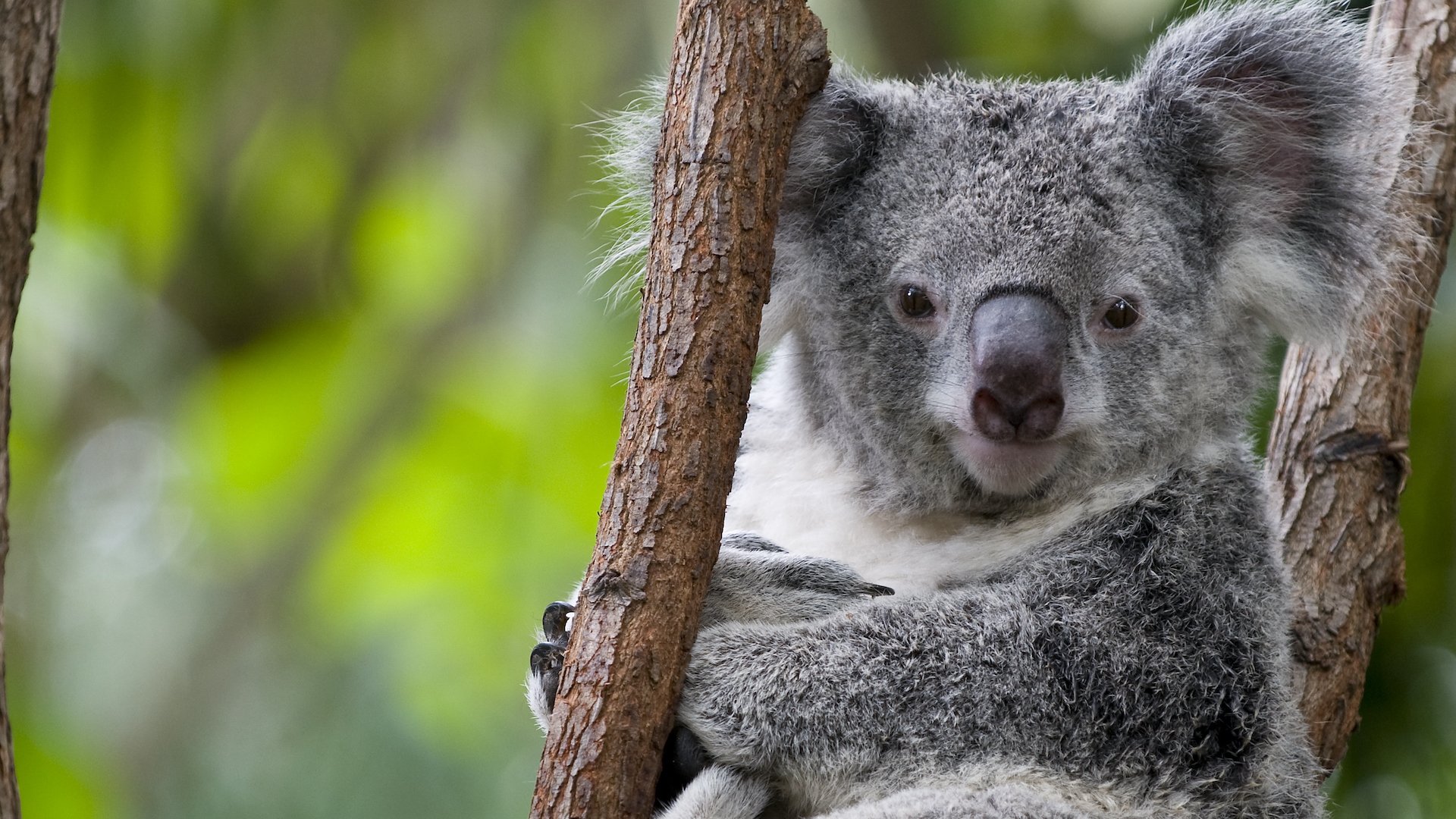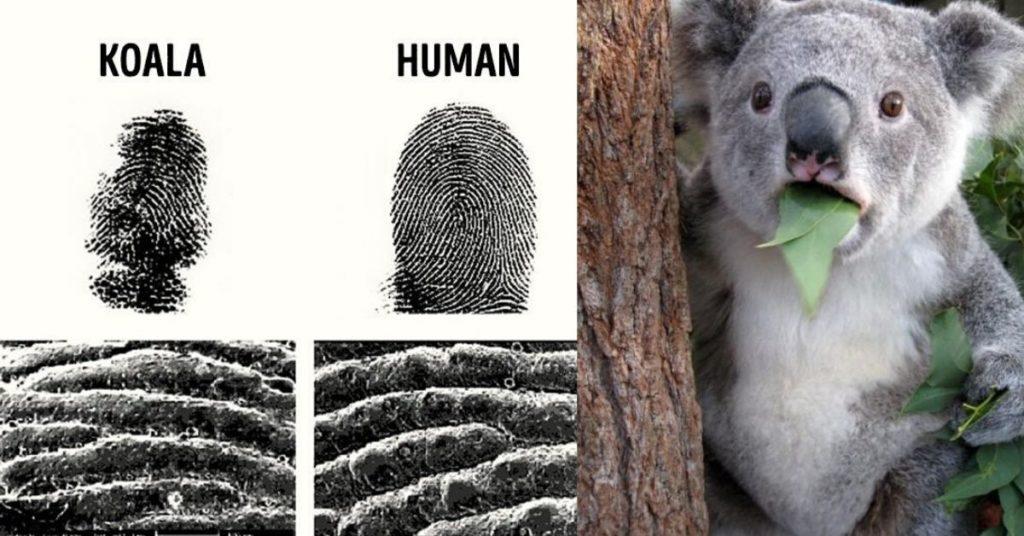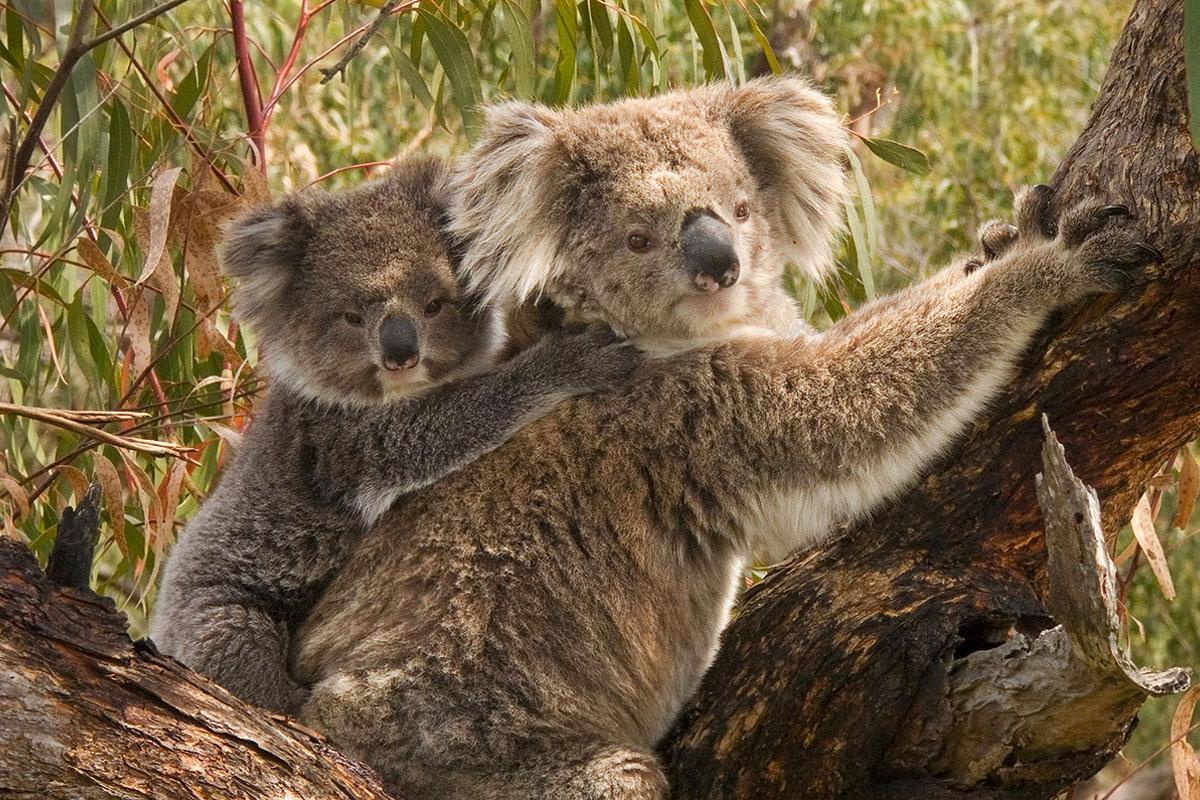Koalas are the only non-primates with fingerprints. How is that possible—and why?

The idea that animal fingerprints could disrupt crime scenes had come up even before koalas’ prints came to light. In 1975, London police fingerprinted several chimpanzees from local zoos as part of a push to address unsolved crimes. Image Credit: Michael Siward, Getty Images
In the mid-1990s, Maciej Henneberg was working with koalas at a wildlife park near Adelaide, Australia, when he noticed something strange: The animals appeared to have fingerprints.

As a biological anthropologist and forensic scientist, Henneberg knew this made koalas unique, the only non-primates with fingerprints. “It appears that no one has bothered to study them in detail,” he told The Independent in 1996, shortly before publishing a journal article announcing the find. Henneberg’s research indicated that not even careful analysis under a microscope could help distinguish the loopy, whirling ridges on koalas’ fingers from our own. The fingerprints were so similar to humans’ that he worried they could easily be mixed up by detectives. (Even so, he acknowledged to The Independent, “it is extremely unlikely that koala prints would be found at the scene of a crime.”)
While Henneberg’s discovery didn’t help crack any koala cold cases, it did add fuel to a decades-long debate about what fingerprints are for and how humans evolved to possess them.

When it comes to fingerprints, we know more about how we develop them than why. Scientists divide the intricate swirl of these one-of-a-kind patterns into larger categories: loops, whorls, and arches. They call the rest of the shapes—places where the lines break, divide in two, or create concentric islands—“minutiae.” While the general gist of your fingerprint is something you inherit from your parents, these minutiae come from the environment you developed in as a fetus, including the makeup of amniotic fluid, how you were positioned, and what you touched in the womb. That’s why everyone has slightly different fingerprints, even identical twins.
But what would make fingerprints useful from an evolutionary standpoint? Before Henneberg’s koala discovery, conventional wisdom held that fingerprints increase friction, helping humans grasp items better. However, a handful of more recent studies indicate it’s more complicated than that.
In 2009, biologist Roland Ennos published a study suggesting that when in contact with an object, the skin on our fingertips behaves like rubber. That means friction between our skin and a surface increases in proportion to the total area in contact. And because the skin is ridged with loops, whorls, and arches, it actually makes less contact with that surface than if it were smooth, meaning that fingerprints may actually decrease friction.


But more recently, a study building on Ennos’ conclusions suggested that, while fingerprints may not build friction on their own, they may help maintain grip by working in conjunction with sweat glands. The researchers found that when in contact with hard, impermeable surfaces, our fingers release moisture. The moisture builds friction by softening the skin on our fingertips, with help from the prints’ tiny grooves, which direct the liquid in a way that allows maximum evaporation. (That’s important because if the sweat pools too much, it could lead to slippage.) The newly pliant skin also allows for another built-in protection, since pressing against the surface eventually blocks off the pores manufacturing the sweat, allowing evaporation to catch up and helping maintain the all-important friction.
“This dual-mechanism for managing moisture has provided primates with an evolutionary advantage in dry and wet conditions–giving them manipulative and locomotive abilities not available to other animals,” coauthor Mike Adams said in a press release at the time.
And fingerprints may also provide crucial sensitivity in our fingertips. Physicists at École Normale Supérieure in Paris found that fingerprint ridges may amplify the vibrations made by rubbing a fingertip across a rough surface, delivering those vibrations to nerve endings in our fingers. This kind of insight has become increasingly important as designers of prosthetic limbs, adaptive technologies, and touch screens seek to understand how our fingers and sense of touch help us interact with the world.
But our last common ancestor with koalas was, by some calculations, more than 100 million years ago, when marsupials split off from the rest of mammals. So how did we come to share this particular trait? The answer is what’s called “convergent evolution,” when unrelated organisms evolve identical characteristics in response to similar evolutionary pressures.
There are only so many ways for animals to climb tall trees, live on cliffs, move around underwater, or accomplish any of the specific tasks required by narrow evolutionary niches. Bat and bird wings evolved separately. As Live Science points out, sharks and dolphins come from lineages that diverged hundreds of millions of years ago, but both evolved smooth skin and sharp fins to help them chase down prey. And since marsupials branched off so long ago, there’s even a parallel track of them in Australia that have convergent-evolved with our placental mammal cousins. Marsupial moles Down Under, for example, are unrelated to moles in other parts of the world. Yet both are blind and boast feet very similarly adapted for a life digging underground.
Koalas are famously picky eaters who seek out eucalyptus leaves of a specific age. And as Henneberg points out in his 1997 paper, koalas may also need to grasp in similar ways to humans, simultaneously, “climbing vertically onto the smaller branches of eucalyptus trees, reaching out, grasping handfuls of leaves and bringing them to the mouth.” He felt that koala fingerprints must have originated as an adaptation to this task, and a relatively recent one, since neither wombats nor kangaroos (both koala cousins) have them. The friction and sensitivity fingerprints afford may help them simultaneously hang onto trees and do the delicate work of picking particular leaves and discarding others—but hopefully not near a crime scene.





